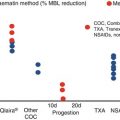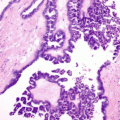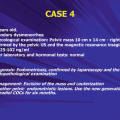© International Society of Gynecological Endocrinology 2015
Bart C. J. M. Fauser and Andrea R. Genazzani (eds.)Frontiers in Gynecological EndocrinologyISGE Series10.1007/978-3-319-09662-9_1313. Supplementation with DHEA in Poor Responder Patients
Paolo Giovanni Artini1 , Giovanna Simi1, Maria Elena Rosa Obino1, Sara Pinelli1, Olga Maria Di Berardino1, Francesca Papini1, Maria Ruggiero1 and Vito Cela1
(1)
Division of Obstetrics and Gynecology, Department of Clinical and Experimental Medicine, University of Pisa, Pisa, Italy
Keywords
DHEA supplementationPoor respondersIVFOvarian reserve13.1 Introduction
Poor response to ovarian stimulation (POR) usually indicates a reduction in follicular response to ovarian stimulation during in vitro fertilization (IVF) cycles resulting in a reduced number of retrieved oocytes. In recent years, mainly due to the postponement of childbearing and the consequent decrease of ovarian reserve, often a POR occurs during IVF despite the high dose of gonadotropins administered. Incidence of POR has been reported from 9 to 24 % [1, 2], and even if this condition may occur unexpectedly, its prevalence increases with age, and it is >50 % in patients over 40 years [3]. Patients with POR are defined as poor responders.
In March 2010, the European Society of Human Reproduction and Embryology (ESHRE) established the criteria for POR diagnosis. Until that, in fact, there was not a uniform definition and the term POR indicated heterogeneous groups of patients. The ESHRE established that at least two of the following three features must be present, in order to diagnose POR:
1.
Advanced maternal age (≥40 years) or any other risk factor for POR
2.
Previous POR (<3 oocytes) with a conventional stimulation protocol
3.
Abnormal ovarian reserve test (ORT) (i.e., AFC <5–7 follicles or AMH <0.5–1.1 ng/ml)
Two episodes of POR after maximal stimulation are sufficient to define a patient as a “poor responder” without advanced maternal age or abnormal ORT. In the case of women over 40 years with an abnormal ORT, we are allowed to talk about “expected POR” [3].
Poor responders remain a challenging group of patients to manage in an IVF program. Despite that in literature there are several publications about poor ovarian response, there is not enough evidence to support the use of any particular protocol in poor responder patients.
13.2 Ovarian Reserve Assessment for Fertility Management
Age and day 3 levels of follicle-stimulating hormone (FSH) and luteinizing hormone (LH) have been used as indicators of ovarian response to ART for several years. The basal FSH concentration is the most common test used for ovarian screening [4]. However, it has been reported that the increase in FSH levels occurs late in the sequence of events associated with ovarian aging [5]; hence, this increase may be of limited clinical use as a marker [6].
Several studies reported the efficiency of antral follicle count (AFC) and ovarian volume in predicting ovarian response to ovarian stimulation [7]. Ovarian antral follicles larger than 2 mm are extremely sensitive and responsive to FSH and are defined as “recruitable.” They can be visualized and measured with transvaginal ultrasound, and the total number of 2–10 mm follicles in both the ovaries represents the AFC [8, 9].
A new endocrine marker, anti-Müllerian hormone (AMH), was evaluated by several study groups as a marker of ovarian response. In women, AMH is produced in the ovary by the granulosa cells surrounding preantral and small antral follicles [10, 11]. AMH expression in ovaries has been observed as early as 36 weeks of gestation in humans [12], is barely detectable in the serum at birth, and increases after puberty [12, 13]. AMH expression declines with advancing female age, to become undetectable again at the time of the menopause [14]. The correlation between AMH levels and the number of antral follicles measured by ultrasound is well established [15–17]. Therefore, AMH levels are believed to be the best representation of the gradual decline in reproductive capacity in women [18, 19], and AMH has been shown to be an accurate marker for the occurrence of poor response to ovarian hyperstimulation with gonadotropins in IVF [16, 20–22]. AMH and AFC are nowadays considered two markers with similar diagnostic performance [23, 24].
13.3 Management of Infertility
Management of poor responder patients is challenging for fertility experts. Women with POR retrieve less oocytes and have less embryos for transfer, and their chances of pregnancy are obviously lower. Frequently, their cycles have to be cancelled because of the absence of follicular development, the lack of oocytes retrieved, or the failure to develop embryos [1, 3, 25, 26]. Poor responder patients can be treated in various ways, either by trying stimulation protocols using high doses of gonadotropins associated with different dosages and timing of GnRH analogs or antagonists or by trying IVF in a natural cycle or with minimal stimulation. Several studies finally suggested the supplementation with hormones like growth hormone, estradiol, androgens, and dehydroepiandrosterone.
13.4 Physiology of DHEA
Dehydroepiandrosterone (DHEA) is a weak androgen produced by the conversion of cholesterol by the adrenal cortex, the central nervous system, and the ovarian theca cells and is converted mainly in peripheral tissue to more active forms of androgen or estrogen [27]. DHEA is abundant during female reproductive life and progressively declines by approximately 2 % per year [28]. This has led some authors to hypothesize that DHEA supplementation may slow down the aging process [29]. Even after 70 years of research, the physiology of DHEA is not fully understood.
DHEA beneficial effects increase over time, and best results are obtained after 4–5 months of supplementation with 75 mg of micronized DHEA daily, a time period similar to the complete follicular recruitment cycle [30]. Numerous hypotheses have been made on how DHEA promotes fertility. Besides serving as an essential prohormone in ovarian follicular steroidogenesis, facilitating follicular function and growth [31, 32], DHEA seems to increase follicular insulin-like growth factor-I (IGF-I) concentrations by ≅150 %, probably independent of changes in GH secretion [33, 34]. This may indicate that DHEA stimulates hepatic and end-organ IGF-1 response to GH, which can promote the gonadotropin effect. In animal models, DHEA has also shown to promote a polycystic environment in the ovaries, with promotion of antral follicle growth, increased levels of active oocytes, and decreased atretic effects [33, 35–37]. Androgens, long considered antagonist of normal follicle recruitment and development, thus assume a crucial role in female fertility: some reports demonstrated that androgens act on folliculogenesis by increasing the number of FSH receptors expressed in the granulosa cells [38]. On the other hand, the addition of androgens in COH is thought to have a positive role in follicular recruitment and granulosa cell proliferation [39]. Moreover, studies have shown the beneficial effect of DHEA administration on vascular function. In fact, DHEA increases vascular endothelial proliferation, migration, and vascular tube formation. DHEA also promotes nitric oxide synthesis, at physiological levels, in intact vascular endothelial cells, inducing vasodilatation [40]. This effect can be very important for vascular function also in the female reproductive system, considering that ovarian folliculogenesis is accompanied by a very finely regulated angiogenesis.
VEGF (vascular endothelial growth factor) is a molecule produced by follicular granulose and ovarian thecal cells in response to gonadotropin stimulation [41]. Indeed, VEGF is implied in endothelial sprouting, enhanced vascular permeability, expression of tissue matrix metalloproteinases and finally in the digestion of matrix, required for the endothelial cells to move [42]. Among its function, VEGF has the role of primary mediator for the formation of a vascular network in the thecal cell layer of the follicle [42, 43].
Van Blerkom et al. [44] observed higher VEGF levels in follicles with higher dissolved oxygen contents and with increased blood flow observed at Doppler, but they failed to find a specific association between follicular VEGF levels and the presumed extent of perifollicular vascularization. A similar conclusion was obtained by Barroso et al. and Battaglia et al., even if FF (follicular fluids) levels of VEGF in poor responder patients were found higher than in normo-responders [45, 46]. Besides, Kan and associates more recently did not show any difference in FF VEGF concentrations among poor responders with and without high-grade perifollicular vascularity [47].
As a consequence, other angiogenic factors might be involved in the process of cellular reaction to hypoxia, acting synergistically or additionally with VEGF, and actually follicular oxygen content seems not to be predictable only by US. Transcriptional upregulation of VEGF is stimulated by HIF1 (hypoxic-inducible factor 1), during cellular adaptation to hypoxia. HIF1 is a transcription factor sensible to low oxygen tension, which prevents fatal depletion of oxygen and subsequent cell death. As a consequence, FF concentrations of this factor are linked by an inverse correlation with the available oxygen, being involved in a certain way in the determination of oocyte developmental competence.
13.5 Therapy with DHEA
Casson and associates, in 2000, firstly suggested an improvement of ovarian function in patients with reduced ovarian reserve from supplementation with DHEA [48]. In their study, they presented young women with unexplained infertility and FSH levels <20 mIU/ml treated with a dose of 80 mg of DHEA daily for 2 months. They did not observe any significant improvements of pregnancy rates, but E2 levels were tripled in all women, and the number of follicles retrieved was doubled. Few years later, Barad and Gleicher published a case-control study in which 25 women were evaluated in their respective IVF cycle outcomes pre- and posttreatment with DHEA, with the same ovarian protocol stimulation [30]. The supplementation was well tolerated by all patients, demonstrating higher number of fertilized oocytes, transferred embryos, and embryo score per oocyte, besides improved oocytes and embryo quality.
In 2007, Barad and Gleicher published a case-control study on 190 women aged more than 30 with poor ovarian response, treated with the same stimulation protocol [37]. Study group used supplementation with 25 mg DHEA three times daily for up to 4 months, while the control group underwent infertility treatment but without DHEA. In the DHEA group, they observed a lower cancellation rate, even if not statistically significant, and a better clinical pregnancy rate (PR), in respect to the control group, despite prognostically more favorable controls and higher mean age in the DHEA group. The miscarriage rate per clinical pregnancy was also found lower in the study group, but these data were not statistically significant.
In 2007 in a small pilot study, the same authors presented 8 patients with premature ovarian aging (POA), who received DHEA for at least 1 month (study group), and 19 women with POA who were not treated with DHEA (control group). The study group demonstrated that DHEA may reduce aneuploidy, but unfortunately, the small number of patients in the study awarded to it an insufficient statistical power [49].
This result was confirmed by the study of the same authors published in 2010, where they concluded that the beneficial effects of DHEA supplementation on miscarriage rates were, at least partially, the likely consequence of lower embryo aneuploidy [50].
An interesting study conducted by Gleicher and collaborators in 2009 reported a significantly decreased miscarriage rate after DHEA supplementation, as opposed to total miscarriage rate in the national US registry, that was attributed by the authors to diminished aneuploid embryo rates, as aneuploidy is a consequence of ovarian aging [51].
A study by Mamas and Mamas, in 2009 [31], presented really interesting results: five premature ovarian failure (POF) patients conceived after at least 2 months of DHEA supplementation, which led to regular periods and decreased serum FSH concentrations and increased serum estradiol concentrations.
In the same year, Sonmezer and associates compared the result of a second cycle of 19 patients treated with DHEA 25 mg t.i.d. with the parameters of the previous, failed, cycle of stimulation. They noted a statistically significant improvement in the number of follicles >17 mm recruited, oocytes retrieved, and MII oocytes and a better quality of embryos. Furthermore, there was a statistically significant improvement in pregnancy rate per patient and per transferred embryo, clinical pregnancies, and implantation rate.
Wiser and associates most recently published the first randomized, prospective, controlled study of supplementation with 75 mg of DHEA orally once a day, at least 6 weeks before starting the first IVF cycle. DHEA patients showed significantly higher live birth rates [52].
In our study [53], published in 2012, we analyzed the effect of DHEA supplementation on follicular microenvironment and on in vitro fertilization (IVF) outcomes among 24 poor responder patients. One group received 25 mg/die of DHEA three times daily for 3 months previous to IVF cycle, while the other group did not receive any treatment. In both groups, we evaluated perifollicular vascularization of recruited follicles through power Doppler blood flow analysis, and follicles were graded as described by Chui et al., according to the percentage of follicular circumference in which most flow was identified from a single cross-sectional slice [54]. The grading system was as follows: <25 % follicular circumference in which blood flow was identified (F1), 26–50 % (F2), 51–75 % (F3), and 76–100 % (F4). Follicular fluids (FF) from F3 to F4 follicles were collected, and FF levels of vascular endothelial growth factor (VEGF) and hypoxic-inducible factor 1 (HIF1) were measured. Results showed that FF levels of HIF1 were statistically significantly lower in women treated with DHEA (14.76 ± 51.13 vs. 270.03 ± 262.18 pg/ml; p = 0.002). On the contrary, VEGF levels did not differ between the two groups. Concerning COH, in the DHEA group, the mean duration of treatment was significantly shorter (9.83 ± 1.85 vs. 12.09 ± 2.81; p = 0.023). Total numbers of oocytes retrieved, fertilized oocytes, good-quality embryos, transferred embryos, and clinical pregnancies tended to be higher in study group, but the results were not significant. On the other hand, considering the oocytes retrieved in selected F3–F4 follicles, there was a relation between HIF1 levels and oocyte quality. In fact, mature oocytes retrieved in selected follicles were significantly more numerous in the DHEA group (0.50 ± 0.52 vs. 0.08 ± 0.29; p = 0.018). Therefore, our data show that DHEA supplementation in poor responder patients can improve the perifollicular vascularization, enhancing oxygen levels in follicular fluid, which is important in order to develop oocytes and embryo of good quality. Thus, the improvement of reproductive parameters after DHEA supplementation in poor responder patients could be explained through the effect that this prohormone has on follicular microenvironment.
Stay updated, free articles. Join our Telegram channel

Full access? Get Clinical Tree







